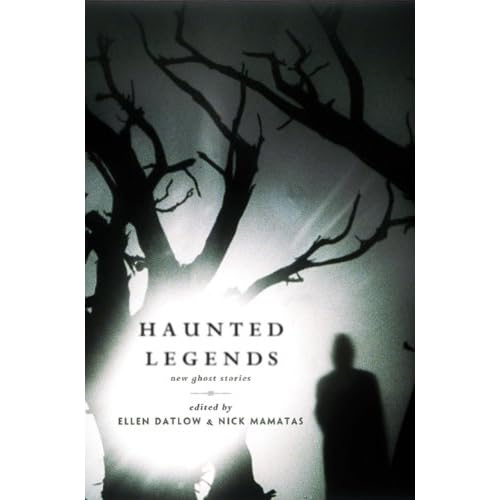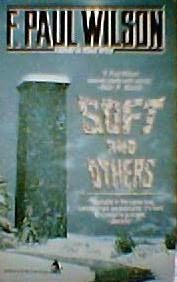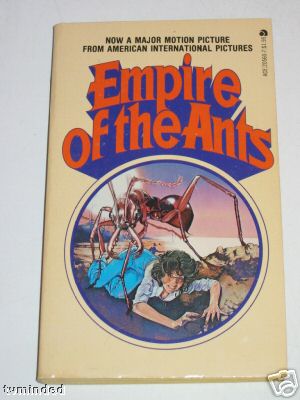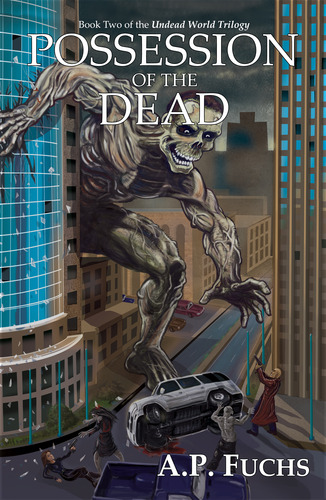By
Frank Menser and Nickolas Cook
Part I—
Chapter 1Chapter 2Chapter 3Chapter 4—
Ashta looked down through the pine forested mountain pass at the red roofs of Amasya. The town looked like a giant ‘V’ cut into the valley, split in two by the winding river Yesilirmak as it wound its way to the Black Sea. It was an unusual place, this town where sultans sent their children to learn to be kings. In their wisdom, the rulers had populated the town with districts for each race and religion that populated the Ottoman Empire; creating a microcosm of cultures. Here were the best Madrasahs; schools both secular and religious. The Halveti were powerful here, sending wandering dervishes from their tekkes hence to teach their vision of Allah. Amasya was the center of learning for all of Turkey; but this did not matter to Ashta, for he was just a thief and a spiller of blood.
It had been several days of hard travel for the Turk, so as he rode into Amasya, Ashta checked the streets for both opportunities to work his trade—and for the Berber thief he pursued. What better place for a man to loose himself, Ashta thought, than in this cauldron of mixed races.
Habit made him glance up as he rode, at the ancient fort dug into the mountain side. That was the Harsene Kalesi, where the troops that guarded Amasya likely slept. It sharply contrasted the white walled houses beneath it. There was money here, Ashta knew; and his purse flopped almost empty at his side. He headed for the market place. There was an old friend there who could help.
“Sweet apples, the best Allah allows this poor land to grow.” A voice sang out above the others in the market. Ashta recognized it as that of the man he sought. Sure enough the loud voiced merchant waved at him from beneath a canopy. It was Malek the Scythian. The round little man stood on an overturned basket, apparently so he would not disappear behind the piles of fruit he sold. “Greetings, Baphe—what is the name this trip friend?”
Malek tossed him a fruit. Ashta bit deep into it, relishing its sweetness. “Ashta,” he said between mouthfuls.
“A charming name; short, for one so tall,” Malek joked.
“It serves me well enough,” Ashta said.
“And Allah too, I suppose. So tell me, what brings you back this way? As I recall you have friends here that would gladly slit your throat.”
“I seek someone who stole from me.”
“A rare species of bird indeed, to steal from the vulture,” Malek said. “Come with me and tell me of its plumage; over a meal.”
#
“So, Ashta…” Malek said after hearing the Turk’s story. “…You are beset by demons—but to what purpose?” He lifted a bowl of ‘toyka’ soup and drank from it.
“What do you mean?”
“well my friend, it seems obvious to me that the Jinni you speak of, was sent by its master to either slay you, or to obtain that bauble you spoke of. That creature has to be the servant of a powerful lord, or a dark necromancer. By Allah’s grace you escaped its clutches.”
“More like some spilled wine,” Ashta grunted betweens sips of tea from an ornate samovar cup. “Would you pass me some yufka?”
“My wife will have to make more—with your sweet tooth,” Malek joked, as he handed Ashta the pastry. “Sometimes I think Allah favors you too well, for the lack of love you give back. But who am I to question his favors?”
“I for one, would wish that the Berber swine shows himself before I get too fat from your wife’s cooking,” Ashta said with a belch.
“On the morrow we shall seek information in the Greek quarter. They are sharp eyed men and a few of them owe me favors. Perhaps then, we can retrieve the jewel and you can sue for favor from this Emir who dogs you.”
Ashta said nothing, but in his thoughts were far from returning the gem. He had felt its power and knew that he had to solve the mystery of it. He picked at the remnant of the pastry and gave Malek a nod. Tis better he thinks I favor his plan. Once I have it, I will follow the amulet where it leads.
#
“Thomas is an idiot!”
“No, it’s that brother of his, Demetrius; he has the brains of a goat.” The two Greek merchants argued over their wares in voices that rang clear above the other vendors.
“What is the reason for the noise,” Ashta queried his companion. “They look to come to blows.”
“Don’t worry my friend, they are Greeks, they always make such arguments.”
“So what is it about?”
“Politics, my large friend,” Malek said, “What else do fools argue about in the sun?”
“So…?”
“Well, it seems the two brothers rule Morea; a small island that—with Constantinople, have thus far escaped becoming part of our Sultan, Mehmed II’s empire. Since their older brother Constantine is no longer there to control them, they have made a mess of it. Now it seems a rebellion is afoot, and the two brothers cannot agree on how to handle it.”
“That cannot go well.”
“Indeed not, they quarrel so much that even their few allies have left them. Soon they—and their brother’s city of Constantinople will be yet more pearls on Mehmed’s ring.”
“Not if Peter Boua has anything to do with it,” the taller of the two Greeks said, turning to Malek.
“Paugh, he has only 30,000 Albanians,” the other said, “what can he do? The Turks will crush him—and the brothers for certain.”
The shorter Greek spat on the ground in disgust, and just as quickly looked up smiling. “Customers,” he asked—then recognition set in. “Malek, the rents not due for another week.” Then, seeing Ashta, he added, “Oils, the finest Grecian olive oils. Rich—to soak up bread or to sooth the limbs of your lover—if that is your need?”
“I come for information,” Ashta said.
“Oh cursed gods, can’t I get a sale?” The short Greek threw up his hands in mock anguish.
“That one is Scalaros,” Malek said, “The tall one is Seneros. Together they make the two loudest fools in the plaza; but also the finest net to cast, when seeking to collect information.”
“So,” Seneros said to Ashta, “Who or what do you want? You have the eyes and long limbs of a hunter and the moustaches of a Cossack. I sense it is something, ah, pleasant that makes you overlook our other fine wares?”
“I seek a man.”
“For pleasure or for—”
Scalaros slapped his hand over the other Greek’s mouth. “He forgets himself at times,” Scalaros said.
“I seek a Berber by the name of Balksid who has stolen from me,” Ashta said gruffly.
“And you plan to kill him…of course you do,” Scalaros released his friend; wiping his hands on his tunic. “So what did he take, Gold, a woman, a camel…no? Perhaps a tall Arabian stallion…?”
“He stole a—” Ashta hesitated. Perhaps, he thought, it would be unwise to tell these Greeks too much. He could see the avarice in their eyes.
“Oh come now, Scalaros said, as if reading his thoughts, “You must confide in us…Yes, I understand your reserve in telling what he has; but how are we to seek if we don’t know what to find?”
Ashta thought for a moment and then answered, “He has stolen an amulet, a cheap copper thing with an amber jewel. It is of no value to me—save it adorned the arm of my dear mother, whom he robbed in her sleep. I seek to regain it for her.”
“Indeed…” Seneros said winking, “We all care for our relatives—” His words were cut short by Ashta’s hand grasping his throat hard.
“Would you call me a liar?”
Scalaros edged in between the two men. “You were saying, oh mighty Turk, that your heirloom needs to be recovered?” He lightly patted Ashta’s wrist, then gently coaxed his hand from Seneros’ throat. “Give us a day and the night as well. I will send a boy then with what we find.”
“I’ll take you at that word then,” Ashta said, and strode away. Malek salaamed and then took off after his friend.
Seneros caressed his throat. “Perhaps,” he called out to the pair, “you prefer the company of Shee—” Scalaros’ hand clamped back over his mouth.
#
The dancing girl whirled with wild abandon. Ashta sat in the corner seemingly fixated on her voluptuous hips—that seemed to deny the laws of creation in their gyrations—but that was not the case. His obsessed stare was but a mask to hide the real subject of his scrutiny, the doorway, where he had been told someone of great interest to him might enter soon. He lifted a cup of wine to his lips, feigning drunkenness. But that act was for someone else’s benefit, for he had been followed into the tavern and those who had watched him closely.
Assassins? He wondered as he watched them from the corner of his eye. The one in the doorway was husky rouge, a Scythian near as tall as himself. The other, who also pretended to enjoy the dancing, was thin and had the look of an African. This one had long lean muscles that spoke of quickness and coordination. He would be the more deadly, Ashta decided, if things turned towards a fight. For a moment his eye caught the Nubian’s stare. There was eagerness there, as in the eyes of a cat watching its prey. The African smiled showing his large white teeth. So the game is known. How will you make your move?
A slim man dressed in a long robe appeared at the doorway, brushing by the Scythian as he entered. The man paused, fingering his long black beard uncertainly. Then, seeing Ashta, the Jew quickly maneuvered through the crowd to the Turk’s table and sat down.
“You are whom Scalaros sent me to find?”
“Yes.”
“I am Saul—”
“The walls have ears here and they listen well,” Ashta said, putting a finger to the Man’s lips. “Now…what did that fawning Greek send you to tell me?”
“He said you sought a Berber. I saw such a man two days ago as he came into my father’s shop. He bore many trinkets and small bits of jewelry to pawn.”
“Was his face scarred?”
“Yes the mark of disease covered his brow. I am to understand that it is a piece of jewelry you wish to recover?”
“Yes, it’s for—”
“Please, we both know that men such as you do not have mothers and I am not so gullible as the Greek. Who are you agent for?”
“I was employed to obtain this item for the Emir of Karamanid.”
Saul leaned back from the table and let out a deep breath, “A powerful employer indeed, why should one of such power hire you?”
“Because I can go where his troops can’t” Ashta growled. “My patience grows thin. Tell me what I need to know.”
“The Berber keeps the amulet around his neck. When I asked if he wanted to sell that with his other ill-gotten wares, he looked at me as one stricken by God. The Berber snatched up the coins for the rest, but left babbling. I recall him saying something about seeking a Genoese man, by the name of Giorgio Carrisione.”
“You speak as if that name is known to you,” Ashta said.
“By the will of God, I have made acquaintance with such a man.”
“And where would I find him?”
“Why, in Constantinople,” Saul said and shrugged, “That is—if you can get past Mehmed’s Janissaries and the city’s defenders.”
As they spoke, Ashta kept an eye on the Nubian. Apparently the Jew was of no interest, for he never looked at him. Instead his eyes remained fixed on the Turk. The Scythian had ducked back into the shadows. Ashta knew they would wait for him to leave the tavern before acting.
#
Momad the Scythian decided he didn’t like the way the Turk kept looking in his direction. He preferred a more subtle approach to killing as opposed to Kiram, his recently acquired Nubian partner. It did not sit well with him that their prey was so aware of their presence. He had the look of a fighter and that could mean trouble. He ducked into the shadows beyond the door to reconsider the job. While it was true that the purse offered by the merchant was sizable, the possibility of injury or worse made the gold sparkle less brightly.
A change in the sound in the tavern made him look in. The Jew had risen and was headed his way, but where was the Turk? He saw Kiram hurry out the back door. Momad raced around the side of the building, hoping he was cutting off the path of escape for the Turk. Suddenly he felt a shock run through his neck. He felt his head hit the ground at a funny angle. He tried to speak but couldn’t. Momad saw a pair of booted feet near him, then a face—then all went black.
#
Ashta wiped his blade on the headless body of the Scythian. He had been lucky with this one, for the man had raced around the corner carelessly, making a perfect target for his blade. He saw the man’s eyes look up at him before they glazed over in death. “Perhaps Malek is right about Allah watching over me,” he mused.
No doubt the Scythian was a hired thug. There was that merchant whose daughter…Ashta smiled inwardly at the memory of an old intrigue. Then the sound of footsteps made him spin around—just in time to parry a blow from the Nubian’s sword. He sidestepped as he parried a second blow, then a commotion from the street made both men turn.
“Hold there, what goes on?” voices called. It was the night watch. The Nubian flashed Ashta a quick grin, salaamed and then ran off.
Ashta sheathed his sword. He spied a low wall behind the tavern and ran to it; vaulting the structure as the watchmen came running around the corner.
“Get him,” a voice yelled.
Ashta ran through a small garden before reaching another wall, as he slid over it, he saw some of the watchmen struggling to get over the first. He deposited himself in the street just in time to see three men with torches emerge from the street to his left. Ashta ran across the street, and then doubled his tracks looking for a place to hide. He saw a low building with vines growing up a trellis on its side. Ashta ran to it and scaled the wall swinging over the edge onto the roof landing on his back as another group of watchmen raced by below.
“Are you so certain Allah loves you?”
There was a sword point leveled at his throat. Grasping it was the Nubian. He was smiling with the same cat-like grin he had flashed in the tavern. “Do not consider drawing on me, I can assure you that would only hasten your end.”
Ashta laughed. “Are you here on behalf of Bin Sali?”
The Nubian grinned even more broadly. “Yes, I and my headless associate were hired from my master by the Arab. He does not favor calling you the father of his grandson.”
“She was a lovely one, that wench,” Ashta said.
The Nubian sighed, “Yes she was—and is. But for that pleasure, a debt of pain is required—at least according to my master.” The Nubian stepped back, sheathing his blade. “But there is no sport—and too many witnesses this eve. I may call upon you at a future time when we may test our skills as men.”
“I shall await you services,” Ashta said. Then the Nubian, with a laugh—leaped from the wall. Below, Ashta could hear guardsmen in hot pursuit.
“This has become an interesting evening,” Ashta said as he lowered himself to the street. As he did, the Turk caught movement inside a nearby window. Within, a woman with long limbs and pendulous breasts sat naked before a bowl of water, caressing her coffee hued figure with a sponge—her black painted fingernails foamy with soap. Ashta watched as she looked up at him and smiled, nodding her head in a timeless welcome. He sighed, “An interesting evening indeed.”
#
Zahra, wife of Malek was busy cleaning up after the morning meal when Ashta strode through the door. She quickly adjusted her niqab so the veil covered her lower face. Though he was Malek’s friend, Zahra feared Ashta, partly because his eyes seemed so much like those of a bird of prey; piercing—like they could see right through her burka. But also; because of the way that made her feel. There was a magnetic sensuality to the man that made her loins ache in a very unacceptable way. Her dreams the night before had been dangerous and sexual. The thought of it embarrassed her and she felt a blush rise to her cheeks. So when he entered, she turned to hide her face in fear that even a glimpse might betray her.
Ashta seemed indifferent to her as he walked over and picked up a bowl full of spiced lamb.
“Would you care for some goat’s milk to wash that down,” she asked.
“That would be appreciated.”
“I will return with some,” she said gathering up some empty bowls. Ashta grasped her garment as she passed.
“Is Malek still here? I would converse with him.”
“No, he is at the market,” she said pulling away. Behind her, Zahra heard Ashta softly chuckle. Curse him by Allah, he knows what I feel.
Ashta had finished eating when she returned and taking the mug of milk from her he swallowed it’s contends in a single gulp. Then flashing a smile at her, he left. Zahra watched him go, her fingers caressing her trembling lips. Who...dear Prophet, said, “Forbidden desires are the sweetest?”
#
Ashta saw Malek back at his post atop the fruit basket. He was doing a brisk trade, so well in fact when a boy darted in and stole an apple he merely looked after him with a forgiving smile.
“Getting soft with age,” Ashta laughed.
“Tis more I would lose on a day like this, chasing such. When sales are to be made here—” Malek stopped in mid sentence. There was no question as to why, for an arrow now protruded from his forehead. At the same time Ashta felt a sting. His hand went up to his ear and came back bloody. Malek toppled off his bucket—dead. Then suddenly, a body slammed into him knocking the Turk flat.
“Get under something, their not done yet!”
Ashta rolled unsheathing his blade as he did. Before he could strike a blow, his rescuer pointed at the second arrow which had wounded a bystander. Ashta shouted, “Why did you do that?”
“No time now,” said the Nubian. “I am Kiram, and I will await your pleasure…later.”
With the crowd milling about in a state of panic, Ashta ducked under a table where he was joined by Kiram. The Nubian grinned as he watched yet another arrow land within inches of them. “That should do it,” he said. “Even the worst assassin wouldn’t risk a fourth shot; not with the city guards coming.” Kiram pointed down the street where—sure enough—a column of soldiers forced their way through the fleeing crowd.
“Why save me,” Ashta demanded. “I will have an answer.”
Kiram shrugged. “See the fat man at the head of the troops? He was my employer, at least till this morning when he dared to call me incompetent. He comes now with the troops so as to appear innocent of your murder.”
“So…?”
“Why should I give him the pleasure of your death when he didn’t pay me?” The Nubian laughed, “Best we on our way before his guards find us both alive.”
“What of the bowman?”
“Allah blessed us with an amateur,” Kiram said. “Now let’s go.”
#
The passing of an hour found the pair sitting beneath the canopy which covered the front of a tavern. It was the owner’s intent that it should block the sun, which it did poorly. However, it did provide a bit of privacy for the two men.
“Allah is indeed mysterious in his ways, Kiram said as he signaled to a serving girl for more wine. “He makes me slave to a man, who hires me out to kill another, and then has the gall to send my only brother out to finish the task. So now I sit drinking with my assigned victim, whilst my brother is probably being lashed for his failure!”
“But what of your master, won’t he seek your return?”
“Yes, it’s likely, but I tire of him. Allah never favors the timid, so I shall be my own man again.” He lifted his cup and took a long drink.
“So it seems we have a similar problem,” Ashta said. He grabbed a loaf of bread; tearing it in two and offering half to the Nubian. “I owe a blood debt to the man your brother slew.”
“Perhaps,” said Kiram, “we should seek to alleviate that problem—as partners, and possibly enrich our travelling funds.”
#
Izbul Bin Sali woke from a troubled sleep to the sound of swords clashing in the dark. Throwing a cover around his naked form and grabbing an oil lamp, he kicked the serving girl who shared his bed out of the way and stormed out the door. Before him was a scene of carnage. Three of his hired swords lay dead in the dark hall. One was choking his life’s blood from a slit throat; the last was locked in combat with a lean giant of a man. The hall was too narrow to allow for much maneuvering, so the fighters slammed into the Arab—almost knocking him over. Seconds later, the last guard cried out in agony. He sank to the floor with a chest wound. The tall slayer turned to him.
“Gold may save your life,” he said.
“Or not,” a familiar voice said behind him. Bin Sali turned in time to receive three feet of steel in his fat belly. Through dimming eyes, the merchant saw and recognized his murderer. It was his slave, Kiram.
#
Zahra was awakened by the sound of a door closing. She looked around. The sun poured its light through the bedroom window; so it was well after noon. It hardly mattered, since she hadn’t risen for the two days passed after being told of her husband’s murder. She rose and stiffly made her way to the main room of her house. As she entered, Zahra gasped in horror. There setting in an opened bag on the table before her, was the severed head of a man, a merchant she had seen with her husband on occasion. It could not have lain there long she realized, as the blood oozed from below his chin. She looked away and shuddered, and then composed herself as best she could. She looked back at the table. Beside the head, there was a note, and another, larger, canvas bag. Zahra picked up the note and read;
This is the man whose orders caused your husband’s death. Within the bag is his blood debt to you.
Zahra picked up the bag. It was heavy. She cradled it in her arm as she tugged the drawstrings open. Within, the new widow found it full of jewels and coins.
#
“See how the mist and spray rise from the waves like dancers, they whirl and twist in such delightful designs.” The speaker of those words was an ancient Imam. His student’s listened; enthralled with his eloquence. Ashta sat across from them on the other side of the ship desperately trying to control his bowels. The teacher’s words only compounded the sea sickness that was making the trip across the Mediterranean an agony for the Turk.
Kiram, on the other hand, sat with the students until he noticed his comrade retching over the port rail. “The fresh air, the sun, how can you not feel invigorated my friend?”
“Go die,” Ashta said.
“Allah takes all in his time, my Son,” the Imam said, misunderstanding the Turks words.
Ashta felt for his knife. Fortunately, it was below deck with his belongings. He groaned.
“We should make the port of Pera in a day or so. Then your suffering will be alleviated,” Kiram said. Then you can search for your Berber acquaintance, while I use our new funds to increase our wealth, buying plunder from the soldiers. There should be some great profits to be made when they finally breach the walls of Constantinople.”
Ashta did not hear Kiram’s words as his thoughts were on the rise and fall of the sea. There was something wrong there, he could sense it. The mist and spray seemed to taunt him, as if something evil was below the surface…watching—following him.
End Chapter 4 of The Eye of Time
---------------------------------

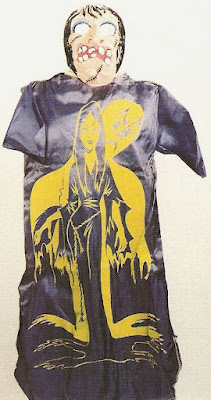 and the sure knowledge that there such things as witches and devils on that one special night of the year. Back then, me and my little brother loved two things more than even Christmas: Halloween and the rock band KISS. We were full fledged members of the KISS. Army, devoted to the supposedly satanic rock and rollers, with loud music about sex, drugs and rock and roll and their (for us, anyway) scary madeup visages. There was an edge, a danger, to them that appealed to most kids- the same kids, like me, who also loved to watch wrestling, and believed in its simplistic good vs. evil cartoon showdowns.
and the sure knowledge that there such things as witches and devils on that one special night of the year. Back then, me and my little brother loved two things more than even Christmas: Halloween and the rock band KISS. We were full fledged members of the KISS. Army, devoted to the supposedly satanic rock and rollers, with loud music about sex, drugs and rock and roll and their (for us, anyway) scary madeup visages. There was an edge, a danger, to them that appealed to most kids- the same kids, like me, who also loved to watch wrestling, and believed in its simplistic good vs. evil cartoon showdowns.

















